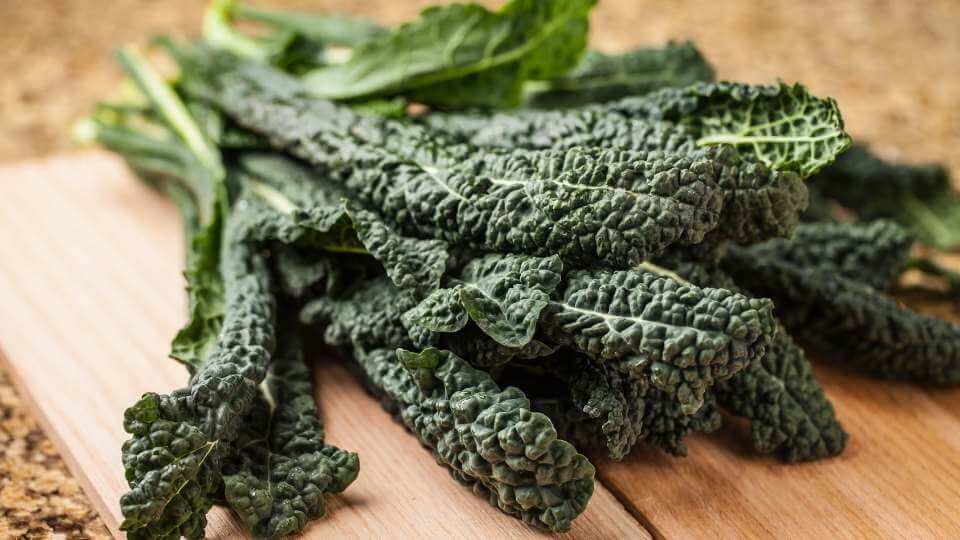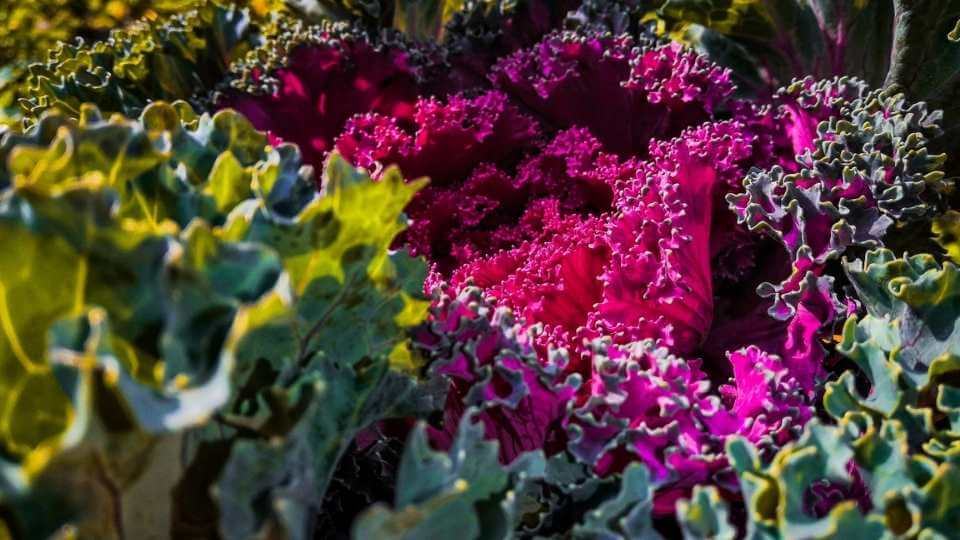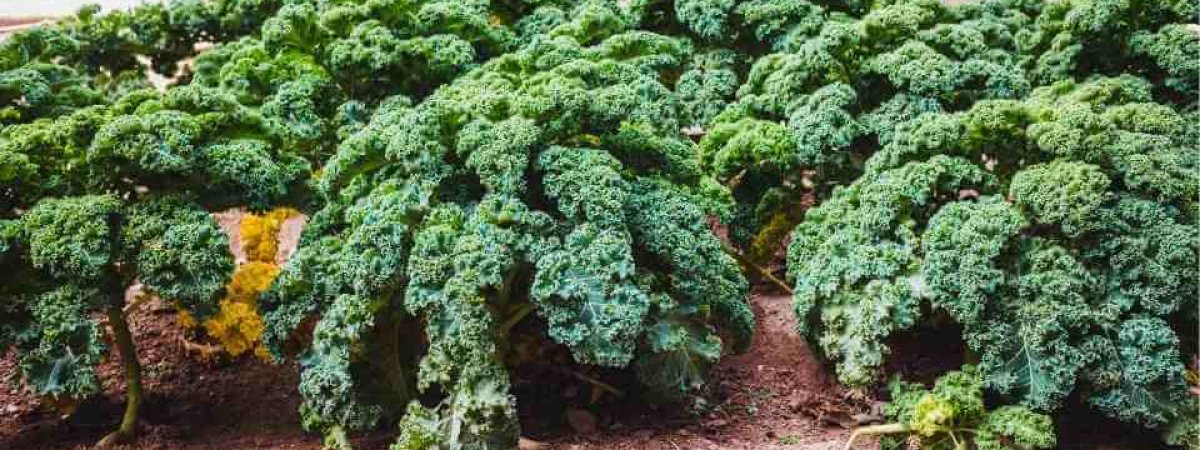Kale is a cruciferous vegetable that falls under the classification of Brassica oleracea var acephala. It is a type of cabbage that doesn’t essentially fall under the common compactly packed head of most cabbages.
Being a treasure box of essential nutrients, kale is grouped in cooking greens categories like mustard, collards, and Swiss chard. The plant is considered ornamental for its curly, textured leaves that are found in different shades of green, purple, etc.
A cool-season vegetable with fast-growing characteristics, kale is grown from seed and can be harvested in about two months!
Want to learn how to grow kale in your home garden to get regular access to the greens? We have got you end-to-end information on the same, along with the best growing conditions of the plant. Read on!
How to grow kale?
Kale is a biennial plant that you can grow in the cooler climates or spring and warmer climates of summer, which makes it an annual plant.
Right time to plant kale
- For an early spring plantation, start with the seed three to five weeks before the last frost date.
- In case the temperature falls below the 20s, use floating row covers for the young plants on cooler nights.
- If you want a fall harvest, plant kale 6-8 weeks before the first frost of fall. For particularly the zones 8, 9, and 10, the greens can be planted late in the fall season and maybe in winter.
- Start harvesting it from fall, continuing till freezing winters. After a couple of frosts, the kale leaves show better flavor.
Preparing the planting site
- The cruciferous veggie prefers full sun, but can also thrive in partial shade
- Your garden soil pH should be 6.5-6.8 to prevent disease. To test your soil pH, you can get a kit from a nearby garden store.
- As per the soil test results, prepare your soil using a blood meal or nitrogen-rich compost. If you are growing kale without a soil test, add a few inches of compost to the garden soil anyways.
- The soil should be well-drained to enrich softer leaves. At the time of planting the greens, add fertilizer to them.
- For fertilizer, use 1-1/2 cups of 5-10-10 fertilizer per 25ft of the row into the top 3-4inches of soil.

Planting kale
- When growing kale from seed, sow ¼ to ½ inch deep into well-drained and light soil. In around 2 weeks, start thinning the seedlings to space them at a distance of at least 8-12 inches.
- If you are using small plantlings for growing kale, plant in the same depth as they were in the container. Maintain a space of 18-24 inches between them.
- Keep watering the plants during the growing period.
Harvesting kale
- As soon as the leaves are of the size of your hand, know the greens are ready to harvest.
- Every harvest, pick a fistful of leaves – start from the oldest leaves from the lower section of the plant.
- You should discard the torn or yellowed leaves.
- Do not pick the terminal bud at the top middle section of the kale plant as it is capable of producing more kales over time.
- The plant keeps growing till the temperature reaches 20°F. With a touch of frost to your kale plant, you will get sweeter vegetable.
- Keep up with the local frost dates.
- To extend the harvest, protect the kale from chilly winters using row covers. You can also have a makeshift cover of tarps or old blankets with hay bales over.
- The tender fresh green leaves of kale can be eaten raw in salads and sandwiches.
- You can cook the larger leaves like spinach. However, always remove the tough ribs.
Storing kale
You can store kale similar to other leafy vegetables. Keep it in a plastic produce bag (do not pack it with kale) and store it in the refrigerator. It lasts for almost a week.

Varieties to choose from while growing kale
You will come across many varieties of kale, and all of them are perfect to grow. Here are a few types that you can be considering choosing while growing kale.
Hanover Salad: This one is a fast-growing variety that gets ready for an early harvest. Best consumed raw in salads.
Lacinato: It is recognized as Tuscany’s heirloom kale. Seldom listed as dinosaur kale or Tuscan kale. The leaves are thick and hardy – perfect for harvesting after a snowfall!
Red Russian: With smooth and softer leaves, these are kale varieties with purple edges and veins. It mostly acts slug-resistant in your backyard/garden.
Redbor: The curly edges and magenta leaves feature a mild crisp texture and flavor.
Vale: This one is a curly, dwarf, bluish0green kale variety that is cold and heat tolerant. The name is derived from the ‘dwarf blue curled scotch’ kale.
Pests and diseases affecting kale plant
- Cabbage worms are a common pest affecting leafy greens. The signs of worm infestation on your kale is chewed holes in the leaves.
- Flea beetles are pests that infest the kale plant.
- Cabbage Aphids are another kind of pest that infects the plant. You can get rid of aphids by sparing insecticidal soap but always keep your eyes for these tiny bugs ganging up between the green leaves.
Taking care of kale plant
Light
As the greens grow only for leaves and not flowers, they can handle full sun and partial shade. For gardeners residing in a warm, dry climate, partial shade is a good thing on hot afternoons. Excessive heat during hot summers can wilt the leaves.
Soil
Kale grows well in soil rich in organic matter with a pH slightly acidic in nature. The rich nitrogen levels in organic matter are beneficial for the healthy growth of your kale plant. The soil should be well-drained and composted.
Water
Water your kale plants regularly to keep the soil moist all the time. Cool temperatures when combined with proper watering promotes the plant to produce crisp and sweet leaves. If the conditions aren’t met, you may have bitter and tough leaves.
To retain moisture and keep the soil cool, add mulch around the kale plants.
Temperature and humidity
The average soil temperature for growing kale is around 60-65 degrees Fahrenheit. All the varieties of kale thrive in cool temperatures and turn sweet with a little frost.
In a hot climate, your kale leaves turn bitter.
Fertilizer
Kale plants need fertilizer to thrive. Mix the nitrogen0rich fertilizer 3-4 inches into the top of your garden soil. Feed the plant all through the growing season.
When growing kale, always follow the instructions on the label of your fertilizer package. High-nitrogen vegetable fertilizer or compost is the best food for kale plants.
Conclusion
Being a biennial plant, kale takes two growing seasons for a complete life cycle. However, it is still grown as an annual crop. The cruciferous vegetable can sustain well through winter in most zones, provided sufficient protection.
When learning how to grow kale, you need to understand that if exposed to heavy snow or frost, the plant will collapse.
For all the Americans reading this, you can grow kale all through the winter season in the USDA zones 7 to 9 (just make sure the climate is mild and the plant receives adequate water). As an annual crop, kale can be planted from zones 2 to 9.






